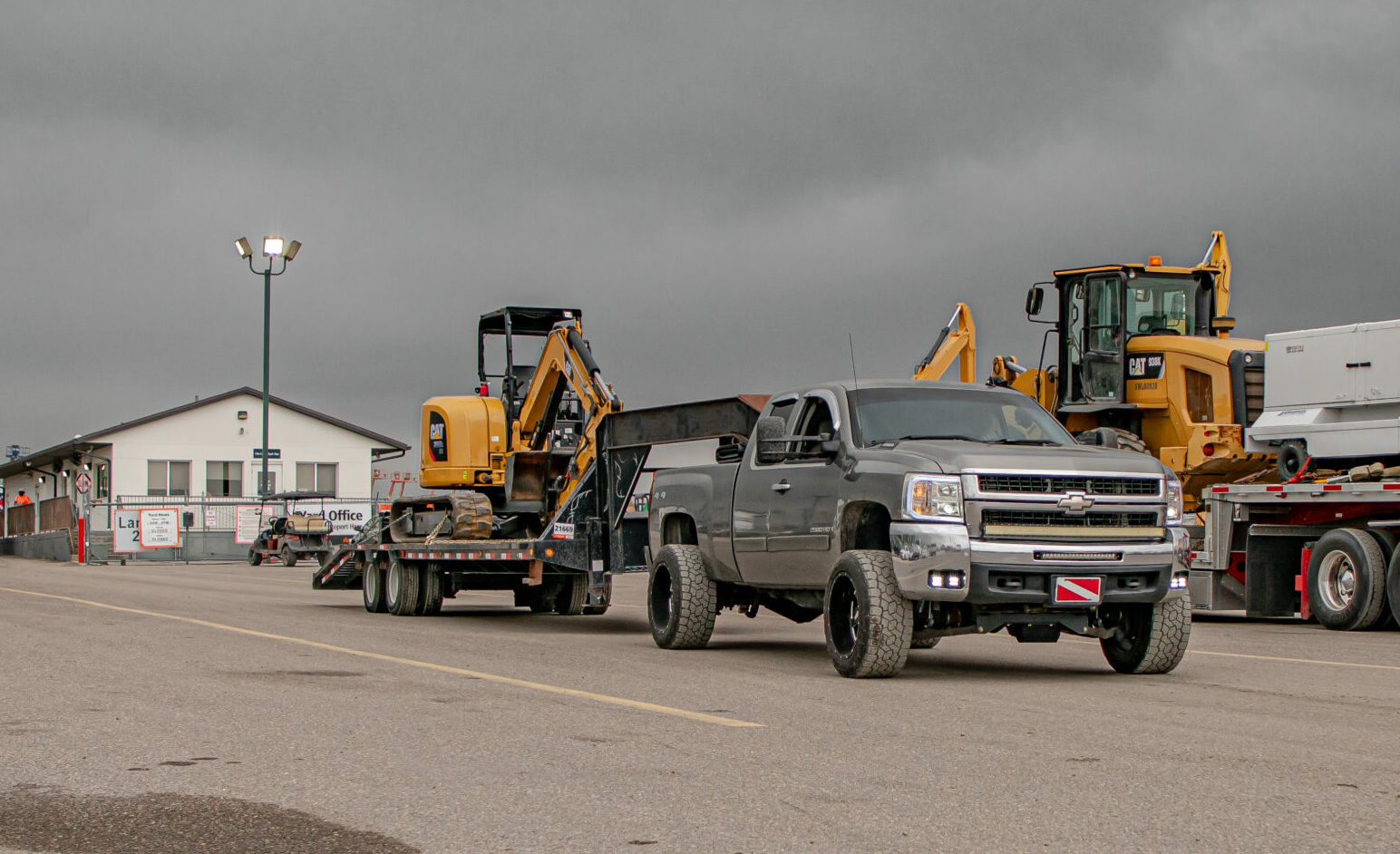In the fast-paced world of hotshots trucking, where time-sensitive deliveries and specialized cargo are the norm, the choice between a flatbed and step deck trailer can be a pivotal one. Both trailer types offer unique advantages and limitations, each catering to specific hauling needs. Whether you’re an owner-operator just starting your hotshot business or a seasoned veteran looking to optimize your fleet, understanding the nuances of flatbed and step deck trailers is essential for success. This comprehensive guide will delve into the characteristics, benefits, and drawbacks of each trailer type, equipping you with the knowledge to make an informed decision that aligns with your business goals and maximizes your hauling potential.
Unveiling the Flatbed Trailer: A Versatile Workhorse
Flatbed trailers are a familiar sight on highways across the country. These open trailers feature a flat deck, devoid of sides and a roof, providing unparalleled versatility for hauling a wide range of cargo. From construction materials like lumber, steel beams, and piping to industrial machinery and equipment, flatbed trailers can accommodate various types of loads.
Advantages of Flatbed Trailers
One of the most significant advantages of flatbed trailers is their ease of loading and unloading. With no sides or roof to obstruct access, cargo can be loaded from the sides, rear, or even from above using cranes or other lifting equipment. This flexibility saves time and labor costs, making flatbed trailers an efficient choice for hotshot trucking operations where speed and efficiency are paramount.
Another advantage of flatbed trailers is their adaptability to different load configurations. Whether you’re hauling long, bulky items or irregularly shaped cargo, the open design of a flatbed trailer allows for creative and secure loading solutions. Adjustable load securement straps, chains, and binders can be used to ensure that cargo remains stable during transport, regardless of its size or shape.
Limitations of Flatbed Trailers
However, flatbed trailers are not without their limitations. One notable drawback is their vulnerability to weather conditions. Cargo on a flatbed trailer is exposed to the elements, including rain, snow, and sun, which can damage sensitive goods. While tarping can offer some protection, it adds an extra step to the loading and unloading process and may not be suitable for all types of cargo.
Additionally, flatbed trailers are subject to height restrictions. Oversized loads that exceed legal height limits may require special permits or escorts, adding complexity and cost to the transportation process. For extremely tall or bulky cargo, a step deck trailer might be a more suitable option.
The Step Deck Trailer: A Solution for Oversized Loads
Step deck trailers, also known as drop deck trailers, offer a unique design that caters to oversized cargo. These trailers feature two deck levels: an upper deck and a lower deck. The lower deck, positioned closer to the ground, allows for the transportation of taller cargo that would otherwise exceed standard height limitations.
Benefits of Step Deck Trailers
The primary advantage of step deck trailers is their ability to accommodate taller cargo. This opens up opportunities for hotshot truckers to haul loads that would be impossible or impractical on a standard flatbed trailer. Construction equipment, large machinery, and oversized industrial components are just a few examples of cargo that can be efficiently transported on step deck trailers.
Step deck trailers also offer improved stability compared to flatbeds. The lower center of gravity resulting from the two-level design enhances the trailer’s stability during transport, reducing the risk of rollovers or accidents, especially when hauling top-heavy loads.
Limitations of Step Deck Trailers
While step deck trailers excel at hauling tall cargo, they do have some limitations. The transition between the upper and lower decks can present challenges when loading and unloading certain types of cargo. Additionally, the lower deck may have a reduced weight capacity compared to the upper deck, which needs to be factored into load planning.
Moreover, step deck trailers may not be as versatile as flatbed trailers when it comes to hauling a wide variety of cargo. Their unique design is optimized for taller items, and they may not be the most efficient choice for standard-sized loads that could be easily accommodated on a flatbed.
The Hotshot Advantage: Matching the Right Trailer with the Right Load
Hotshot trucking is a specialized niche within the transportation industry, catering to time-sensitive shipments and often requiring specific equipment. Choosing between a flatbed and step deck trailer can significantly impact your ability to secure and efficiently transport these loads. Freight brokerage services play a vital role in connecting hotshot truckers with suitable loads, taking into account the unique capabilities of each trailer type.
When to Choose a Flatbed Trailer
Flatbed carriers are a popular choice for hauling a wide variety of cargo that doesn’t exceed standard height restrictions. If your hotshot business focuses on transporting construction materials, machinery, or other items that can be easily secured to a flat deck, a flatbed trailer is a versatile and efficient choice. Its open design allows for quick loading and unloading from multiple angles, reducing downtime and maximizing your earning potential.
When to Opt for a Step Deck Trailer
Step deck trailers, with their lower deck height, are indispensable when hauling taller items that would otherwise violate height restrictions. If your hotshot business specializes in transporting heavy equipment, large machinery, or oversized components, partnering with step deck trucking companies can open up lucrative opportunities that wouldn’t be accessible with a standard flatbed. The added stability of a step deck trailer also makes it a safer choice for transporting top-heavy loads.
Factors Influencing Your Decision: A Comprehensive Analysis
While understanding the strengths and limitations of each trailer type is essential, several additional factors can influence your decision.
Payload Capacity. Consider the weight capacity of each trailer type. Flatbed trailers generally offer a higher weight capacity across the entire deck, while step deck trailers may have a reduced capacity on the lower deck.
Cost Considerations. Step deck trailers typically come with a higher price tag than flatbeds due to their specialized design and construction. Factor in the initial investment as well as ongoing maintenance costs when making your decision.
Availability of Loads. Research the types of loads that are prevalent in your target market. If oversized cargo is in high demand, a step deck trailer might be a worthwhile investment. Conversely, if you primarily haul standard-sized loads, a flatbed trailer might be a more practical choice.
Driver Experience and Preference. The experience and comfort level of your drivers should also be considered. Some drivers may prefer the familiarity and ease of operation of a flatbed trailer, while others might enjoy the challenge and specialized skills required for operating a step deck.
Conclusion
Choosing the right trailer type amongst a variety of hotshots trucking is a critical decision that can significantly impact your business’s success. Flatbed and step deck trailers each offer unique advantages and limitations, catering to different hauling needs. By carefully evaluating your business goals, target market, and the types of cargo you intend to transport, you can confidently select the trailer type that aligns with your needs and maximizes your earning potential. Whether you opt for the versatility of a flatbed or the specialized capabilities of a step deck, remember that the right trailer, paired with reliable freight brokerage services, can open doors to new opportunities and drive your hotshot trucking business to new heights.



































